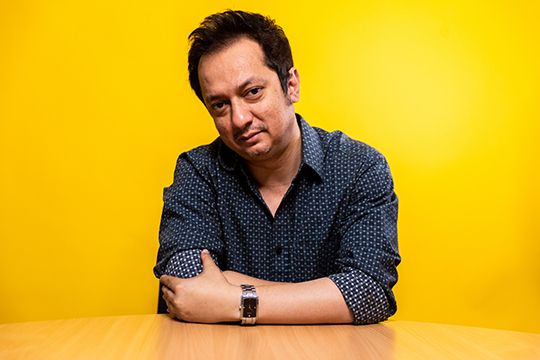Not just international politics but even in foreign trade, in 2018, India has established itself as one of the world’s most open economies
New Delhi: The Narendra Modi government has been redefining India’s foreign policy more radically and profoundly than anybody before him. From a timid presence, we have moved to aggressively market India globally, from playing with the just the usual suspects, we have started widening our ring of influence in places no other Indian PM has gone, and from sanctimonious non-alignment to pragmatic and self-interest-driven all-alignment.
The past one year has been no exception. In fact, India has got back control of some of the situations which were suddenly slipping, like the Maldives and Sri Lanka.
Not just international politics but even in foreign trade, India has established itself as one of the world’s most open economies.
“India’s trade openness, which is measured by the ratio of exports and imports to GDP, stands at 41 percent. That is higher than the figure for many other major developing economies, including China. In the 1980s, by contrast, India’s total trade as a percentage of GDP was about 15 percent,” writes Srinivas Thiruvadanthai in Foreign Policy.
Here are some of India’s major foreign affairs wins in 2018
Balancing friends and enemies
In Buenos Aires last month, India held two trilateral meetings. One interestingly acronymed JAI (Japan, America, India), the other RIC (Russia, India, China). That India is part of two crucial but diametrically opposite geopolitical formations is in itself a diplomatic feat.
Similarly, while Shia power Iran has been our old friend, we have got equally close with Sunni powers Saudi Arabia and UAE. Several extraditions, including that of Agusta Westland scam middleman Christian Michel, has happened because of greatly improved ties with UAE.
The Saudi energy minister recently endorsed Modi’s national interest-driven diplomacy when he said the PM was extremely vocal about the effect of oil prices on Indian consumers.
Also, our excellent relations with the US, Saudi, UAE or Israel have not meant worsening ties with Russia or Iran. We continue to get oil from them. And this oil leverage could work for Modi before 2019 elections. Oil prices have already started dipping substantially.
Managing Trump’s America
It was a remarkable year when it comes to India’s relationship with the US. The two nations held the first ever 2+2 dialogue during which they signed the Communications Compatibility and Security Agreement (COMCASA) that would open the way for sales of more sensitive US military equipment to India.
The maiden trilateral meeting with Japan and US was another landmark step which showed India’s growing might in geopolitics given this axis primarily will work to counterbalance China’s growing ambition and influence in the region.
India kept calm despite President Donald Trump’s repeated eccentric provocations calling it the “tariff king”, clearly with an eye on his domestic constituency. Eventually, Trump praised India as “a tough negotiator” and came to the table on bilateral trade.
The S-400 coup and Iran waiver
The US made a huge exception and allowed India to purchase the S-400 missile defence systems from Russia. This costs substantially lower than US’s own Patriot Pac II and the much-vaunted THAAD missile defence batteries.
It also made a waiver for India to deal with Iran despite severe sanctions on the latter. As a result, the Modi government has more bargaining power while buying oil.
Re-winning the neighbourhood
With the Maldives falling into a pro-China leader’s hands, growing anti-India sentiment in Nepal, the sudden rise of China’s friend Mahinda Rajapaksa in Sri Lanka and a perpetually hostile Pakistan, India seemed to be losing grip on its neighbourhood.
However, things have changed again rapidly. A new ruler, Ibrahim Mohammed Solih, has assumed power in Maldives and PM Modi was the only international leader to attend his swearing-in.
Rajapaksa’s march has been thwarted, and Ranil Wikremesinghe is Sri Lanka’s new PM, much to India’s relief. Relations with Nepal has also improved from a nasty point.
Sheikh Hasina has swept Bangladesh elections amid widespread allegations of rampant rigging. But India is happy because Hasina keeps a tight leash on Islamists like Jamaat, who could have wreaked havoc by opening the Myanmar-Bangla-India corridor for Rohingya infiltrators and terrorists had its ally BNP come to power. China, in rare consonance with India, also mainly backed Hasina despite keeping channels open with BNP.
Pakistan remains the same Pakistan, except that Trump has clamped serious fund restrictions and announced a big reward for perpetrators of 26/11.
China sunshine, from Doklam to Wuhan
After acute tensions over Doklam last year, Modi and Xi Jinping met informally at Wuhan in April 2018 and relations started looking up. India was also a part of the Russia-India-China (RIC) trilateral in Buenos Aires. After the Doklam freeze, hand-in-hand military exercises between the two Asian powers have also resumed.
In trade, the warmth of China unblocking of basmati and sugar and market access to India goods has to be followed by concrete action on the ground. Overall, ties have normalised.
India begins 2019 on a very strong note. A strong foreign policy has not gone unnoticed by the nation’s masses. “Modi-ji videsh mein Bharat ka sanman badhaye hain (PM has enhanced India’s standing abroad)” is a common refrain even among the poor. Besides geopolitics and economy, the foreign affairs successes may augur well for the PM even in the general elections this year.
Last Updated Dec 31, 2018, 6:15 PM IST











![Salman Khan sets stage on fire for Anant Ambani, Radhika Merchant pre-wedding festivities [WATCH] ATG](https://static-ai.asianetnews.com/images/01hr1hh8y86gvb4kbqgnyhc0w0/whatsapp-image-2024-03-03-at-12-24-37-pm_100x60xt.jpg)
![Pregnant Deepika Padukone dances with Ranveer Singh at Anant Ambani, Radhika Merchant pre-wedding bash [WATCH] ATG](https://static-ai.asianetnews.com/images/01hr1ffyd3nzqzgm6ba0k87vr8/whatsapp-image-2024-03-03-at-11-45-35-am_100x60xt.jpg)



